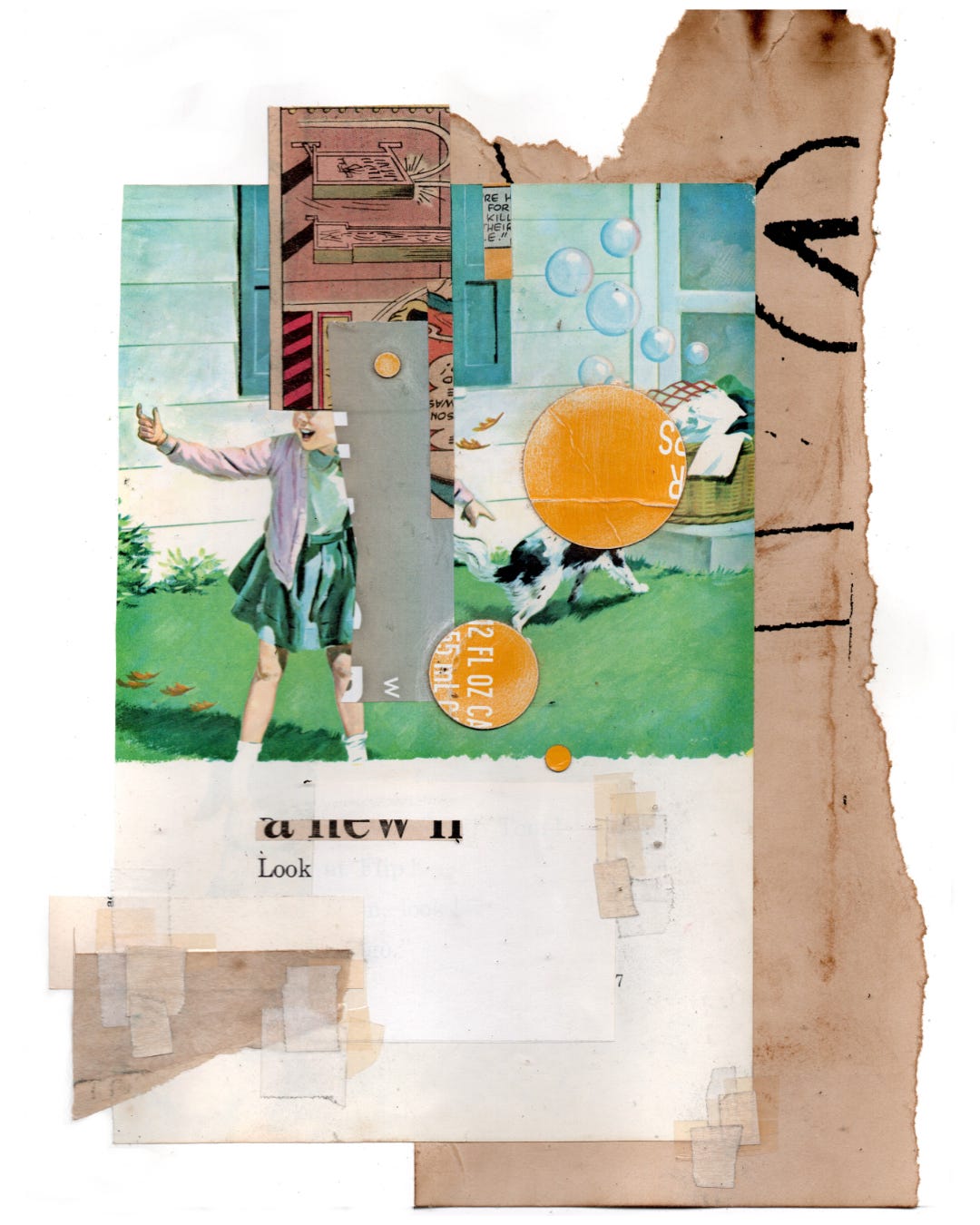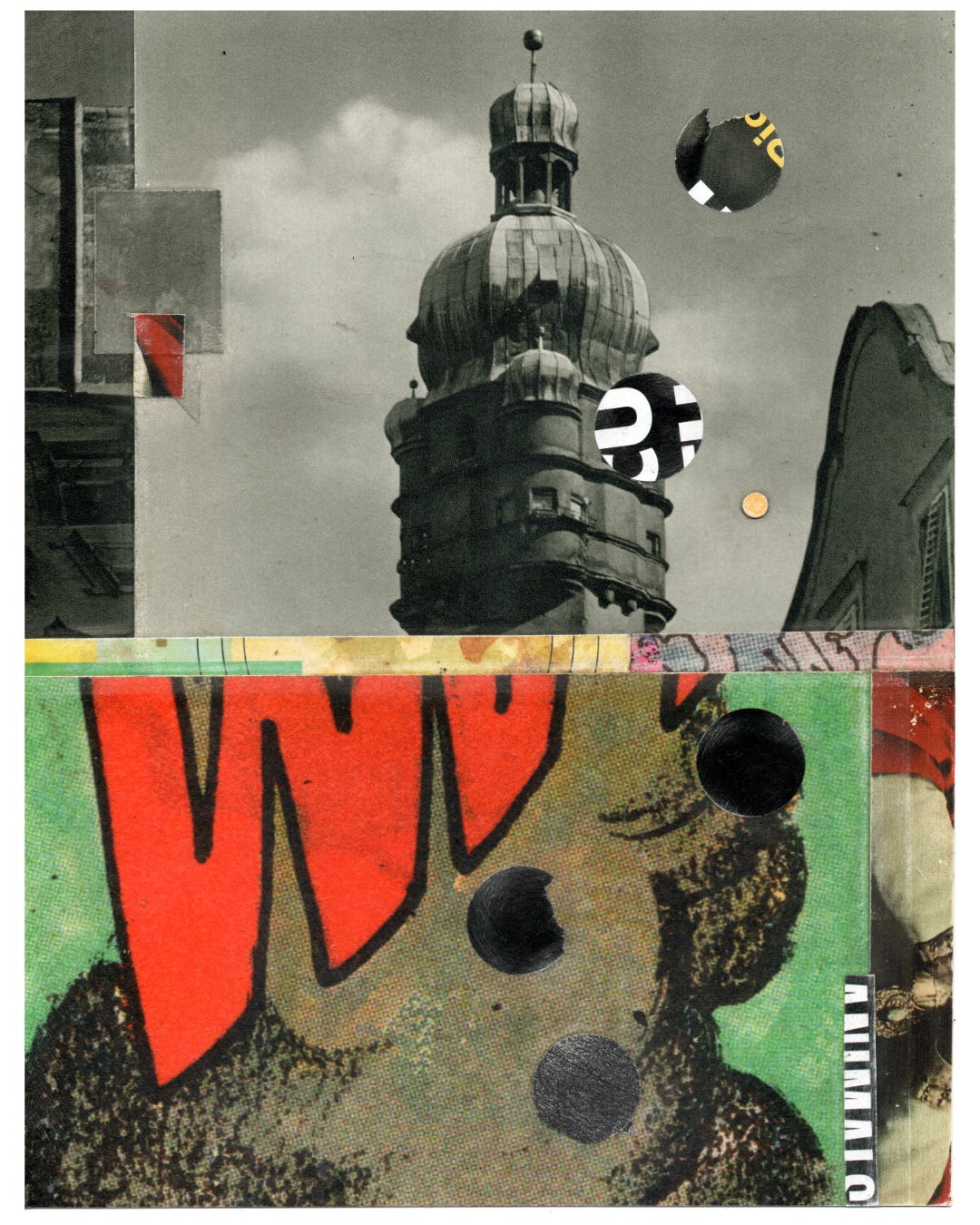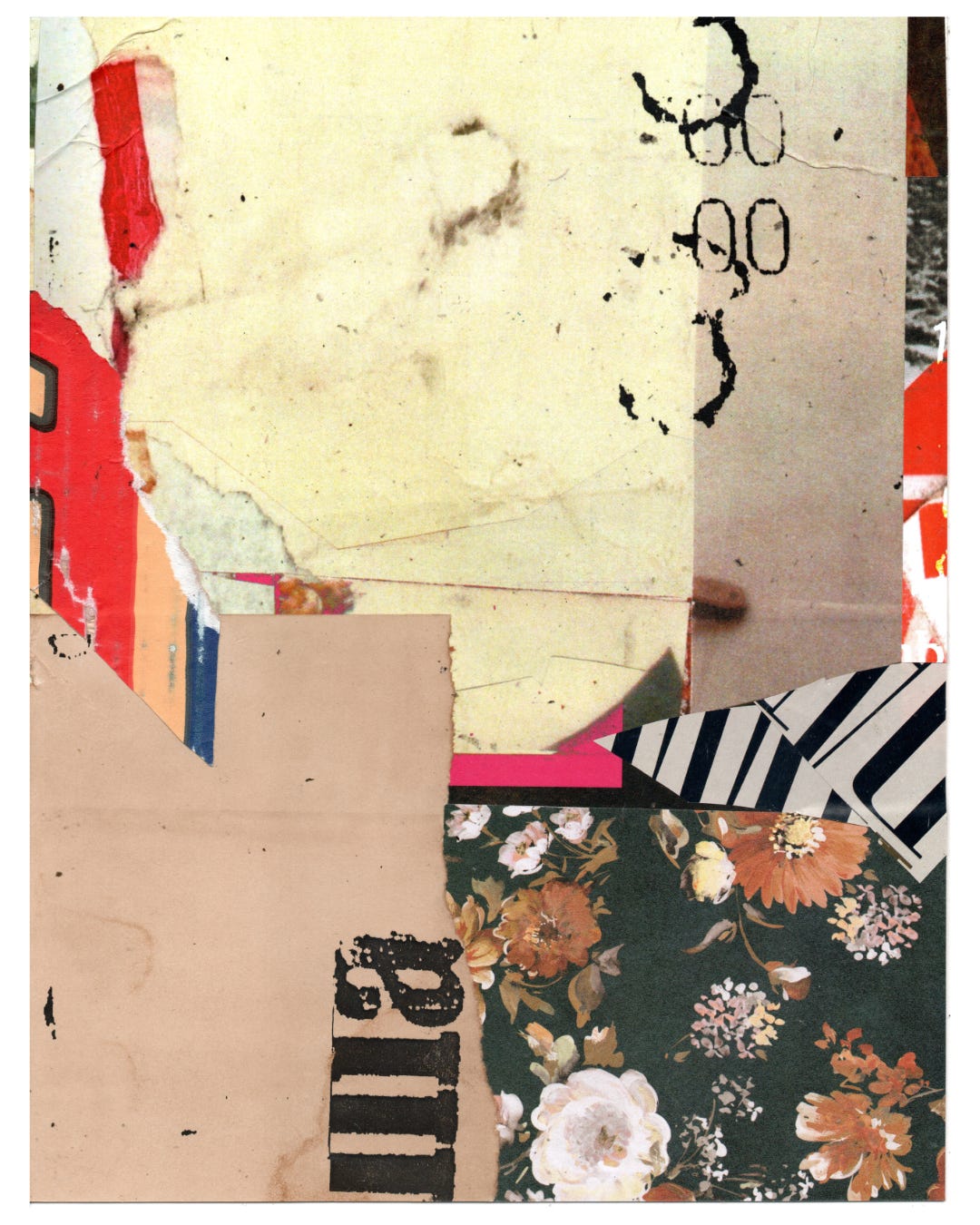I’ll never get tired of singing the praises of this incredible community that I’ve stumbled my way into. Being able to interact and engage with people that are so passionate and inquisitive gives me a kind of joyful gratitude that is utterly inexpressible.
One of my paid subscribers sent me a few questions that were so thoughtful, and considered, and interesting. They’re a wonderful mix of big ideas and practical utility. I knew I had to answer them with the same amount of care and attention that they were given. When I did, I knew I wanted to share it with all of you too. I asked for her permission, and I’m so thankful that she let me.
*When you sit down to create, do you usually have a concept in mind, or do you let the pieces evolve and guide you?
It's rare that I start with a concept or even an idea. Whenever I've tried to guide the work it tends to go badly. It gets stuck and stunted. It feels forced and uncomfortable. Like it's too busy and like it's missing something simultaneously. My best work, the work that I find most satisfying, most fulfilling, and most interesting is the work that surprises me. It's the work that happens when I let go enough to let the pieces to tell me what they want to be. It's when I let the work guide me.
*I’ve been working analog (mainly because I’m hopeless with Photoshop). Beyond the usual scissors and scalpel, are there any cutting tools you find especially helpful?
Firstly, if you have access to a scanner and software like Photoshop I encourage you to use both, for two reasons that you might not be expecting. Scanning analog materials and then tinkering with them digitally gives you the option to have a low friction, no-waste sketch book. You can workshop ideas and structures without the threat of losing anything.
And this leads into the second reason, these compositional sketches can often become collage papers that you can print out and incorporate into your analog work. So much of my work is comprised of this hybrid approach of scanning, digitally manipulating, printing, and then collaging.
"Never ride stock" they say, and I believe this applies to collage materials too. Any amount of customization you can bring into your source material not only adds aesthetic intrigue but it also helps you to develop a visual language that you can utilize across the spectrum of your work.
As far as cutting is concerned, my approach and needs are basic and simple. I don't usually do any detailed, 'fussy-cutting'. I tend to favor clean lines and sharp edges when it comes to how I cut my materials. My primary tool of choice to accomplish this is a small, retractable, snap-blade utility knife. I almost always couple using it with a metal, straight-edge ruler. These are by far my two most indispensable tools.
*Your work has such a strong signature—it’s instantly recognizable as yours. I know that kind of identity comes with time, but right now I feel like I’m bouncing around between abstract, conceptual, and everything in between. If you had to put it into words, how would you describe your own style, and what elements do you think make it distinctly recognizable?
I've been asked about "style" on more than one occasion. About how to develop it. About how to find it. I don't know if I'm qualified to answer. Mine is accidental, in that it happened as a consequence of making a lot of mistakes and accidents trying to do the things that I wish I could do. Getting them wrong enough, badly enough, until they become something interesting.
I love graphic design, typography, and photography, but these aren't my strong suits. So instead I try to get at them through the things that I can do. I incorporate text and type into my collages. I use strong graphic elements and gritty textures. I cut, crop, and layer images in a way that creates a sense of tension and narrative. I steal and remix. I fumble and I fail, and when I'm lucky it all turns into something new.
"Style", isn't what happens when you play to your strengths, it's what happens when you embrace your weaknesses. It's what happens when you pay attention to what you pay attention to. What catches your eye in art, in images, in the work of others, in your own, in the world? Take note. Take it in. Take it on. Let it over take you. Lean in to what sparks your intrigue. Chase your curiosity. Become a servant of wonder. When you do, you'll discover that the whole time you thought you were making work, the work was secretly remaking you.






“Become a servant of wonder” This is going up on my bathroom mirror.
I'm endlessly grateful for the generosity and openness you bring to this community. Every time I read your posts, I walk away with something new—some spark of insight or encouragement that stays with me. There's a gentle wisdom in the way you approach your work and answer questions, making even the most uncertain parts of the creative process feel a little less daunting.
Your honesty about not forcing a concept, and letting the work guide you, really speaks to me. It's comforting to know that even the most distinctive voices are shaped by accidents, experiments, and the willingness to lean into what feels uncertain or strange. That kind of permission is something a lot of us need: to let our curiosity lead, to embrace our own mistakes, and to trust that style is something that emerges with time and attention, not something you have to chase down.
Thank you for sharing your process so generously, and for building a space where curiosity and wonder feel not just welcome but celebrated. I too am grateful for this community.